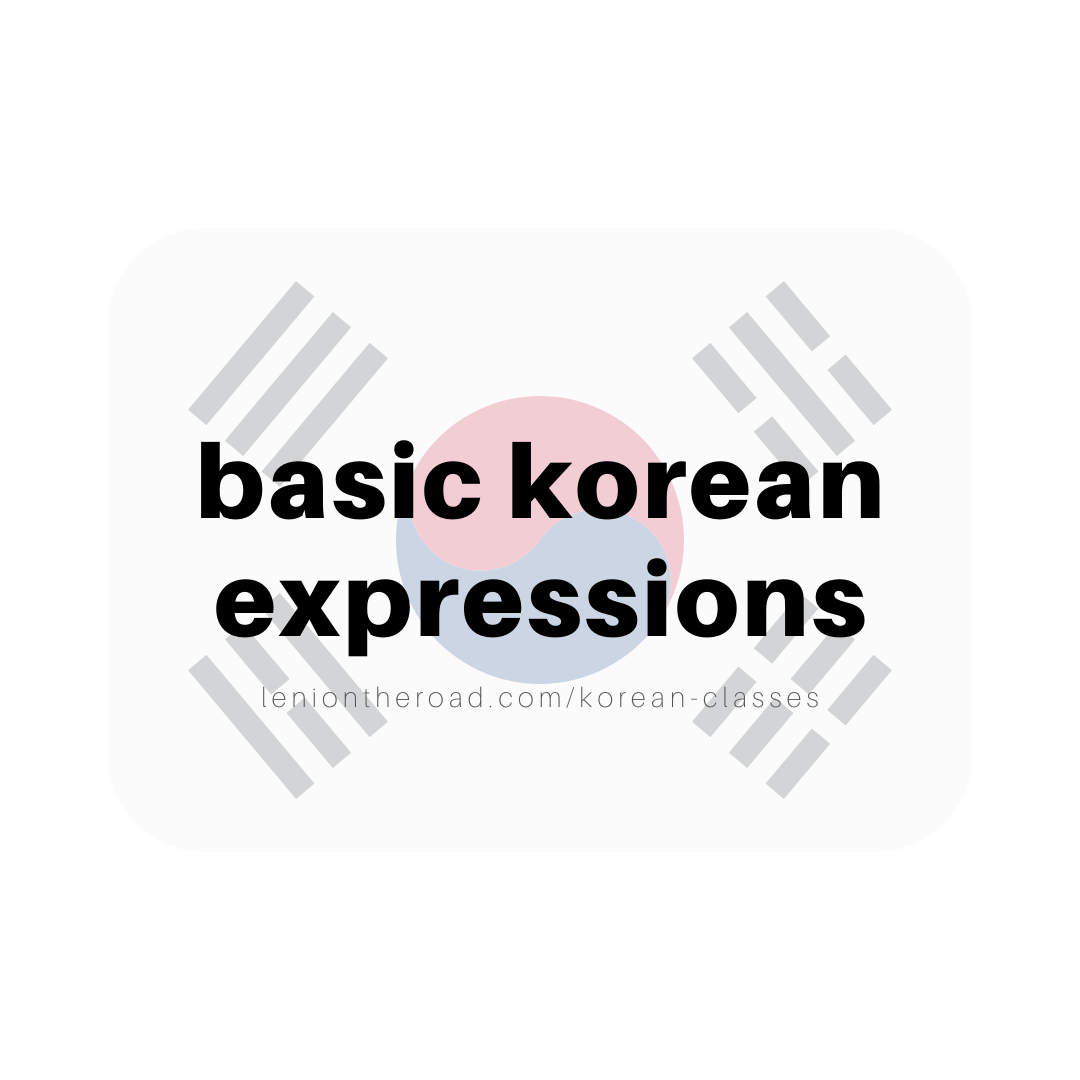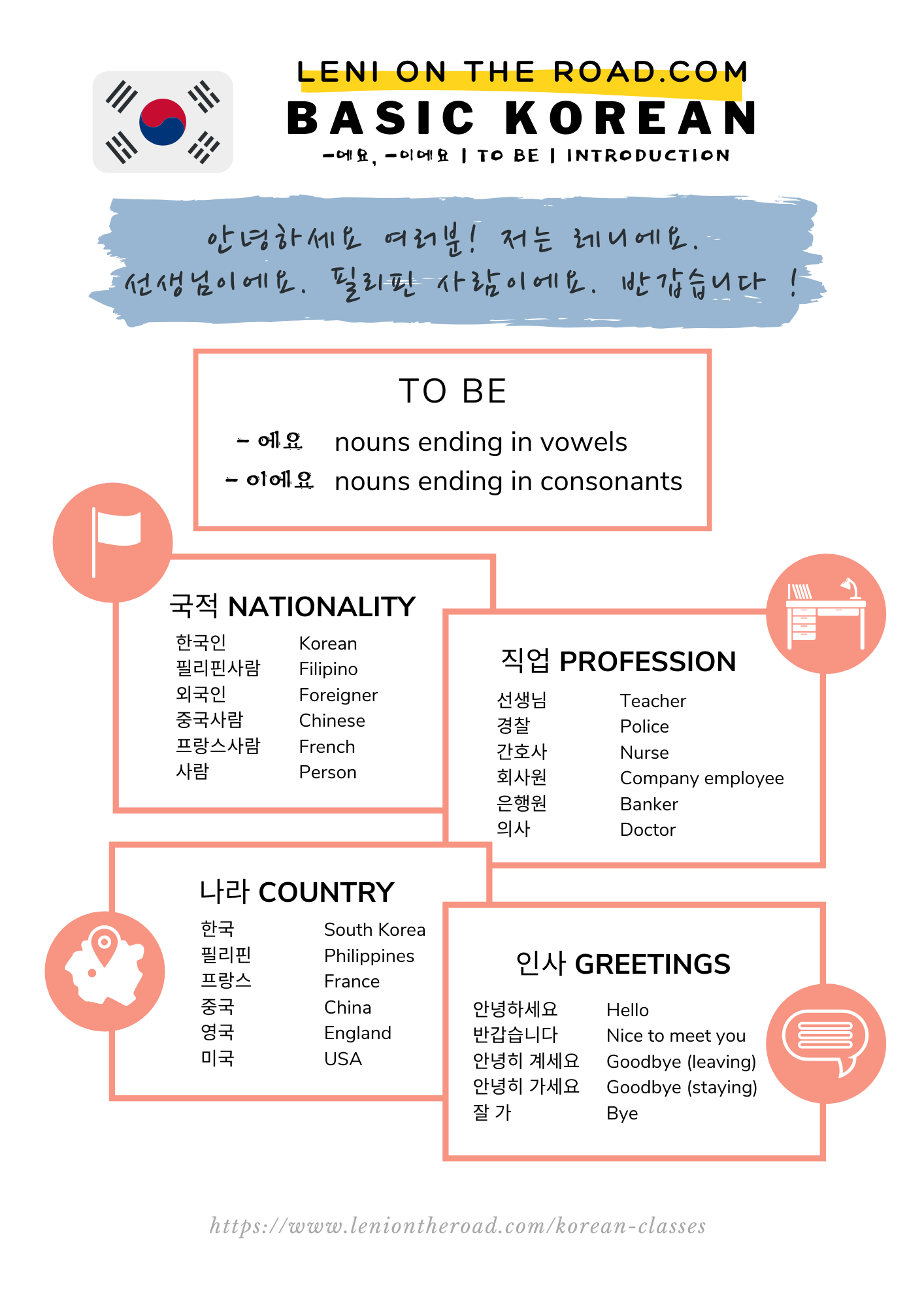Introducing yourself in Korean
“안녕하세요 여러분! 저는 레니에요.
선생님이에요. 필리핀 사람이에요. 반갑습니다 !”
Romanization : Annyeonghaseyo yeorobun! Jeoneun Leniyeyo. Seongsanegnimieyo. Pilripin saramieyo. Bankapsumnida!
Translation: Hello everyone! My name is Leni. I am an instructor. I am Filipino. Nice to meet you.
We’re taking up a familiar and distinctly Korean sound. It’s that one syllable that people produce when trying to make out a Korean accent. You’ve guessed it right, the ending -요 (yo). There’s more to it than what it seems. In this lesson, we’re taking one step closer to making sense out of that -yo.
Greetings
A few handy greetings to begin and conclude your introduction are the following:
안녕하세요 - hello
반갑습니다 - nice to meet you
안녕히 계세요 - goodbye (when you’re leaving)
안녕히 가세요 - goodbye (when you’re staying)
잘 가 - bye (informal, casual)
There are a whole bunch more greetings in Korean but what I’ve cited here are the mostly used and heard of in Korean series and sitcoms.
Korean grammar is quite easy to grasp. What can be extremely confusing are the honorifics. Korean society takes hierarchy seriously and is very much apparent in their language. This manifests in the sentence endings.
Honorifics are taken up at a more intermediate level. The safest word ending we will favor in these basic lessons are the informal yet polite form, those that end in -요. Occasionally, we will also make use of the -ㅂ니다 ending. Koreans will generally appreciate these forms. These are deemed safe, neutral and polite. You get a pass as a foreigner and a thumbs up for trying to communicate in their language.
- 에요 and - 이에요, to be
In order to introduce yourself with your name, nationality or profession, the verb “to be” is a handy word. Conjugation in Korean is simple - it’s the same structure for all subject(s) (pronouns). In Korean, “to be” is either - 에요 (ye-yeo) or - 이에요 (i-ye-yeo). Nouns ending with vowels are succeeded by - 에요 while nouns ending in consonants are followed by - 이에요.
Take for instance the following sentence :
저는 레니에요. I am Leni.
The pronoun and subject marker 저는 is optional in Korean. Subjects are often implied, therefore dropped, unless needed to be highlighted. My name, Leni, in Korean is written 레니, and ends with a vowel. Therefore, we must attach - 에요 to complete the sentence.
Pro tip: The sentence structure in Korean is (subject) - object - verb. This explains why the verb “to be” is found at the end of this sentence.
Consider the following sentence :
선생님이에요. I am a teacher.
Here, the speaker is identifying himself with his profession. However, the subject pronoun, being optional, was dropped. 선생님 (teacher) ends with a consonant. Thus, we must attach - 이에요 to complete the sentence.
Finally, let’s take a final example :
필리핀 사람이에요. I am Filipino.
In this sentence, the speaker is indicating his nationality. 필리핀 사람 is Korean for Filipino (citizen). It combines the words 필리핀 (Philippines, the country) and 사람 (person). Technically, this word is literally translated as person from the Philippines. Since 사람 ends with a consonant, it is followed by - 이에요.
There are more uses for the verb “to be” in Korean, as we will see in the succeeding modules. For now, have a try for yourself!
이름이 뭐예요? What’s your name?
어느 나라 사람이에요 ? Where are you from?
직업은 뭐예요? What is your job?
Comment below!
No Korean keyboard? No problem! Use this for the meantime.
Need more vocabulary? Check out these online Korean dictionaries:




